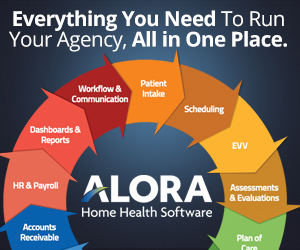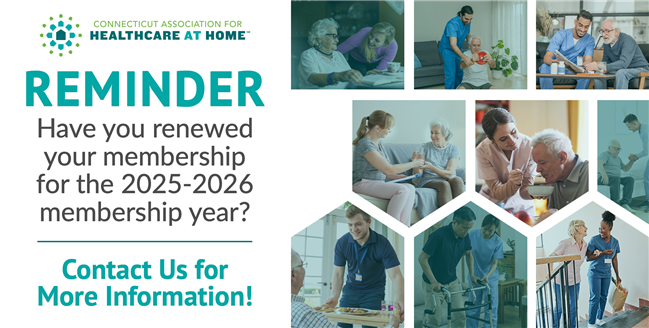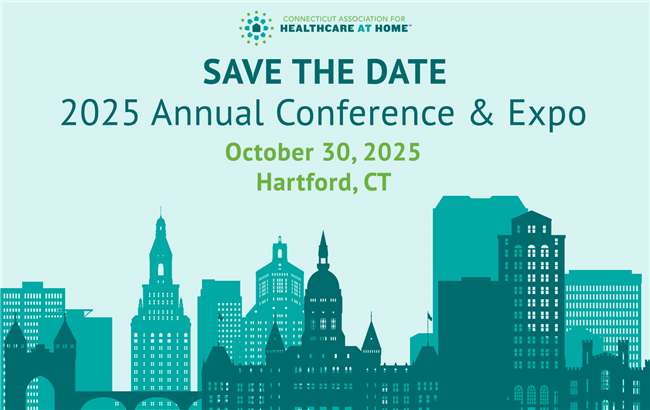 |
|||||||||||||||||||||||||||||||
| June 19, 2025 | |||||||||||||||||||||||||||||||
Source: Chris Smith, Rome Smith Kowalski (RSK)
With the 2025 legislative session coming to a close on Wednesday, June 4th, the Association’s advocacy efforts focused largely on the inclusion of Medicaid reimbursement rate increases in the state budget. Leading into the session at the end of 2024 and into the first month of the legislative session, the Association was well positioned for increases. Unfortunately, broader political conditions—primarily federal budget uncertainty and the Governor’s insistence on strict adherence to fiscal guardrails—created an inhospitable budget climate as the legislative session proceeded.
Despite broad legislative support for increasing Medicaid rates for our members, neither the Appropriations Committee’s proposed budget, nor the Governor’s proposed budget, accounted for the increases in Medicaid that we advocated for.
The budget did, however, include the following (details forthcoming once the budget books are published):
Additional legislation within the budget bill includes updates to the worker safety laws:
To access the complete report, click HERE.
Source: Home Health Care News, June 13, 2025
The Medicare Payment Advisory Commission’s (MedPAC) June report to Congress examined home health care use among Medicare Advantage (MA) and traditional Medicare patients and found that MA enrollees receive 11% fewer home health visits compared to Medicare fee-for-service.
The report, issued Thursday, largely found “relatively modest” differences in home health use between MA and Medicare fee-for-service beneficiaries, though it found that prior year hospitalization, the type of MA plan and other factors impacted utilization.
Source: Journal of Palliative Medicine
Recognizing the central role of HH as a de facto means of providing home-based palliative care—and strategizing how to integrate palliative care principles and education into it—holds the potential to expand access to palliative care services and improve the quality of end of life for older Americans. The authors identify four main barriers to successfully integrating HH into the suite of palliative care delivery models. First, the HH workforce lacks training in fundamental palliative care. Second, the current lack of ongoing physician involvement in the HH setting. Third, reimbursement. Palliative care services are often excluded from traditional payment models, particularly in the HH setting. Lastly, financialization of the HH sector. They say that integration of palliative care within for-profit HH agencies may require a strategic emphasis on financial incentives.
Guest Editor Note, Ira Byock, MD: This academic oped extends the drumbeat toward alternatives to hospice care. Overcoming barriers to home-based palliative care requires steps that are strikingly similar to those needed to make hospice programs successful. The authors repeatedly refer to HH interdisciplinary teams. In fact, home health is a multidisciplinary model of service delivery that lacks the clinical synergy of high-functioning interdisciplinary hospice teams. Source: Alliance Daily, June 11, 2025
On June 10, the Alliance formally submitted comments in response to the FY 2026 Hospice Wage Index and Payment Rate Update proposed rule. Reflecting the extensive input from our members gathered through meetings, discussions, and listening sessions, our response was co-signed by 51 state associations representing 40 states.While supporting the goals of the Centers for Medicare & Medicaid Services (CMS) to promote quality and preserve the integrity of the hospice benefit, the Alliance urged the agency to reconsider the proposed 2.4% payment update, noting it falls short of rising costs driven by ongoing workforce shortages and labor costs. The Alliance also emphasized concerns with the implementation of the Hospice Outcomes and Patient Evaluation (HOPE) tool—currently scheduled to go live on October 1, 2025—recommending CMS delay implementation and temporarily waive timely submission requirements to allow adequate preparation.
We greatly appreciate the valuable contributions from our members that shaped this comment response. The final comment letter is available on the Alliance website.
Source: HHL, June 12, 2025
While there’s a growing focus on workplace violence in home health, don’t let your policies and procedures around work-related injuries fall through the cracks. Refreshing your incident response and reporting policies not only supports employee wellbeing but could prevent costly OSHA penalties.
Nearly 500 workplace-related incidents were reported in home health settings in 2024, according to the Occupational Safety and Health Administration (OSHA). The data was part of OSHA’s annual workplace injury and illness report released on April 17, 2025, which consisted of approximately 370,000 reports submitted on OSHA Form 300 Summary of Work-Related Injuries and Illnesses.
Employers have a legal obligation to provide their staff with a safe working environment, says Robert Markette, an attorney with Hall, Render, Killian, Heath & Lyman in Indianapolis, Ind. Strong internal policies that ensure a swift response to these incidents not only help prevent employee harm but allow your team to continue providing high-quality care without pause, he notes.
Source: HHL, June 12, 2025
Do not misinterpret the intent of OASIS transfer questions under GG1070A-E (Mobility) as a direct match to M1850 (Transferring).
Accuracy for these items is important as the GG items are used as part of the Discharge Function Score, which requires an accurate assessment at start of care (SOC) and discharge (DC) in order to establish if the patient improved in their ability to transfer, notes Diane Link, owner of Link Healthcare Advantage based in Littlestown, Pa. Results directly impact your potential for a payment boost or cut under Home Health Value-Based Purchasing (HHVBP).
And M1850 is part of the Quality of Patient Care Star Rating on Care Compare.
These GG and M items are not equivalent and their scoring scales differ, notes Susan Jirsa, divisional director of quality assurance with Aveanna Healthcare based in Atlanta, Ga., who adds that this is a common mistake with the items related to transfer.
Source: MAC Legacy
A new piece of federal legislation is generating significant concern across the hospice industry. The Medicare Advantage Reform Act (H.R. 3467), introduced by Rep. David Schweikert (R-Ariz.), proposes major changes to the Medicare Advantage (MA) program including a requirement that MA plans cover hospice care directly.
Currently, when a Medicare Advantage enrollee elects the hospice benefit, coverage shifts to traditional Medicare. This transition preserves hospice as a distinct, interdisciplinary benefit designed specifically for those at the end of life. The new bill would eliminate that shift and require hospice services to be administered within the managed care structure of MA.
|
|||||||||||||||||||||||||||||||
| Past Issues | Subscribe | cthealthcareathome.org | Advertise with Us | |||||||||||||||||||||||||||||||






